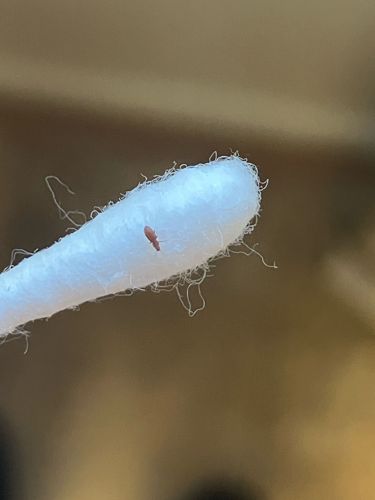Booklouse
Scientific Name: Psocoptera (various genera, e.g., Liposcelis)
Order & Family: Order Psocoptera, various families (e.g., Liposcelididae)
Size: 0.5 mm to 2 mm

Natural Habitat
Damp, warm, and dark places. Commonly found in homes, libraries, museums, and food storage areas. They feed on microscopic mold, fungi, starch, and organic debris found on books, paper, wallpaper, grains, cereals, and other stored products.
Diet & Feeding
Feeds on microscopic mold spores, fungi, starch, glue (from bookbindings), dead insect fragments, and other organic matter. They do not bite humans or animals.
Behavior Patterns
Booklice are mostly nocturnal or prefer dark conditions. They are quite active but typically go unnoticed due to their small size. They are attracted to high humidity (above 60-70%) and warmth. They reproduce rapidly, especially in favorable conditions, and can have several generations per year. Some species are parthenogenetic, meaning females can reproduce without males.
Risks & Benefits
Potential risks: Can cause damage to books, paper products, stored food items (grains, cereals), and museum collections by feeding on mold or the materials themselves. In large numbers, they can be a nuisance and may contaminate food. They do not transmit diseases to humans or pets and are not known to bite. Potential benefits: Act as decomposers in natural environments, helping break down organic matter.
Identified on: 10/27/2025